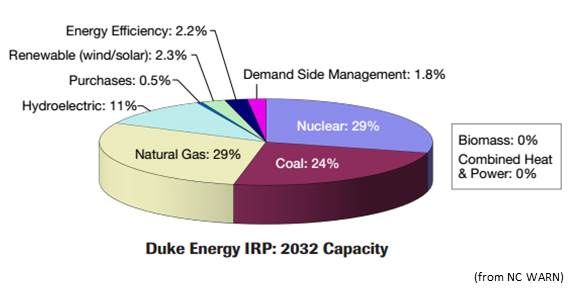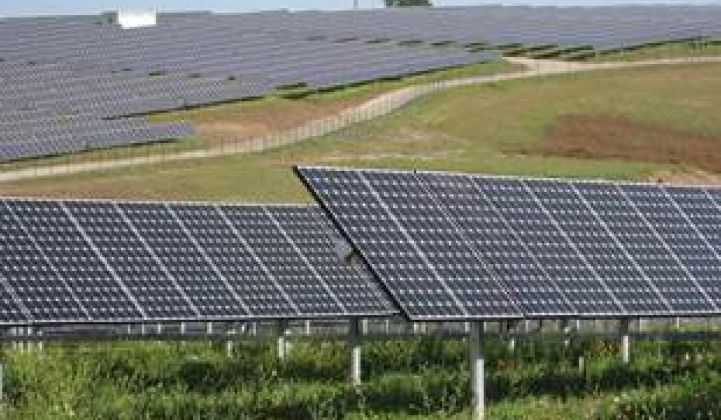Duke Energy's move to invest $500 million in 278 megawatts of utility-scale solar is unprecedented in the state -- but it's getting mixed reviews from North Carolina solar advocates.
Duke Energy looks to own the following projects:
- Warsaw Solar Facility, developed by Strata Solar and soon to be the largest PV plant east of the Mississippi River, 65 megawatts
- Elm City Solar Facility, developed by HelioSage Energy, 40 megawatts
- Fayetteville Solar Facility, developed by Tangent Energy Solutions, 23 megawatts
Duke Energy will sign PPAs with these new projects:
- Bladen County, developed by Innovative Solar Systems, 48 megawatts
- Richmond County, developed by FLS Energy, 48 megawatts
- Scotland County, developed by Birdseye Renewable Energy, 20 megawatts
- Cleveland County, developed by Birdseye Renewable Energy,19 megawatts
- Beaufort County, developed by Element Power US, 15 megawatts
“Solar prices are coming down. We can make it work at an attractive price," said Rob Caldwell, VP at Duke Distributed Energy Resources, adding that the current PPA prices are “about a third” of the $0.11 per kilowatt-hour Duke now pays for rooftop solar.
The investment was driven by North Carolina’s 12.5-percent-by-2021 RPS. Scheduled to be on-line by the end of 2015, the acquisitions will make Duke compliant with the interim targets of 6 percent by 2015 and 10 percent by 2018, according to Caldwell.
But some North Carolina solar advocates say this could be the utility’s last such investment for a long time, and that it is also working to impede private development in distributed generation in the region.
“Duke Energy’s solar announcement today is a good step, but it’s the only step Duke plans to make toward renewables for its Carolinas customers over the next fifteen years, according to its newly filed long-range plans,” said Jim Warren, executive director of renewables advocacy group NC WARN. “Meanwhile, Duke is actively working to stifle the growth of large-scale and rooftop solar in North Carolina in the ongoing case at the utilities commission.”
“The regulated side is trying to fight independent solar at the same time that the commercial side is investing $500 million,” said Shawn LeMond, founder and CEO of Sapien Research & Consulting. LeMond is a former North Carolina Republican legislator who has consulted with Duke Energy and other solar developers. “Duke knows that solar is the future. But it wants to be the only solar in the future.”
In the current North Carolina Utility Commission avoided-cost determination case, Duke is asking for cuts in the standard PPA term, from fifteen years to ten years, and in the standard contract’s maximum eligible system size, from 5 megawatts to 100 kilowatts, according to NC WARN witness Nancy LaPlaca. “That would essentially push smaller developers out of the market.”
Under the 1978 Public Utilities Regulatory Policies Act (PURPA), any project that complies with the standard PPA terms and will sell at or below the avoided cost of other generation, as determined by state regulators, must be purchased by local utilities. The bulk of the North Carolina solar market has come about due to the PURPA requirements, LaPlaca said. The state's 630 megawatts of installed capacity include only about 1,500 rooftop installations. The increasing variety of PURPA-eligible resources requires new attention from regulators, according to Kendal Bowman, Duke Energy VP of policy and regulatory affairs. “Lowering the eligibility limit for standard rates to 100 kilowatts will ensure that Qualifying Facility capacity is actually needed by the utility,” he said.
The severe limitations in Duke’s proposed standard contract changes would limit independent developers,according to the testimony of NCUC staff research director John Hinton. “Risk goes way up and cost goes way up,” LaPlaca added. If developers do get financing, the resulting higher-than-avoided-cost price would leave them without an offtaker.
Meanwhile, LaPlaca said, Duke will rate-base the 128 megawatts it is buying and will likely be granted a nearly 10 percent rate of return. It becomes possible to build the biggest solar project east of the Mississippi because the risk is eliminated. “The customers pay for it,” she added.
Though Duke cannot rate-base the PPAs, that solar goes to RPS compliance, LaPlaca said. And, because the state's RPS allows utilities to use energy efficiency to replace some renewable generation, “Duke may not have to acquire any more solar after 2021 unless North Carolina increases its mandate.”
“Duke is putting $500 million into solar,” LeMond said. "But what they are doing at the utility commission is stopping independent [developers] from building five times that. The market would build a lot more solar, but Duke is fighting it.”





